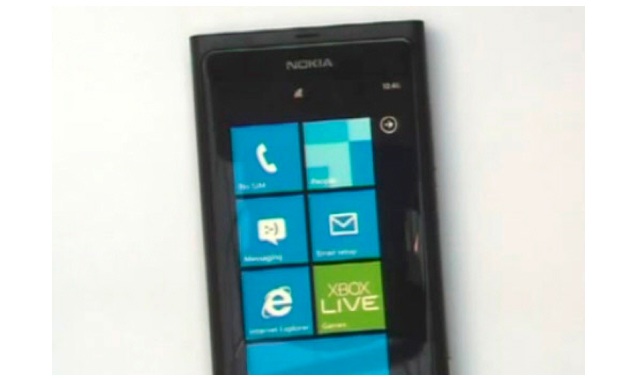
Conor Pierce is a bit biased, being Nokia’s General Manager in UK and Ireland, but he claims that everyone he shows the new Nokia Windows Phone to says it’s “stunning.”
A prototype of the so-dubbed Sea Ray device leaked earlier this summer, and we found it to be a logical aesthetic progression from the company’s storied Symbian line-up. Indeed, if Nokia is looking to its cozy future with Microsoft, they might as well bring their years of design excellence with them.
In an interview with Pocket-Lint, a UK-based tech blog, he claims, “[m]y ambition is to bring Nokia back to where it was in terms of smartphones,” referring to a time before iPhone when the company not only sold the most phones in the world (it arguably still does, if you count entry-level devices) but had the most cultural cache within the smartphone community.
Back then it was just Nokia and Palm, with a few entrant stragglers, duking it out for world domination. But pre-2007, it really was only Nokia who was able to marry true multi-tasking and a keen design aesthetic that everyone recognized. “For the most part… [Nokia] are the first phone they had,” and he’s right. Every mom, teenager and business man has likely owned a Nokia device at some point, even if they didn’t know it.
Nokia’s success in North America, however, has always been underwhelming, to put it mildly. While they enjoyed triumphant sales and influence in Asia and Europe, it has always been a struggle bringing that success over to the other side of the Atlantic. With Windows Phone 7, and its Mango release, Nokia hopes to finally marry competitive and worthy software to their famous hardware quality.
A lot of people think it’s going to work, too. Simply put, everyone, including tech journalists like us, are quietly inviting Nokia back into our lives. Before February, when they were written off as a dinosaur company with nowhere to go but down, their partnership with Microsoft was seen as a curious and dangerous step towards co-dependance. Not only would they no longer control the software they put on their devices, but there was no telling what influence Microsoft would have on their future branding power.
Now with the release of Mango and its unbridled success (more on that in a few days), it’s easy to see what Nokia did in those late months of 2010 when they began negotiations with Redmond. Mango is a clear and awesome improvement over the 1.0 release, and while both Microsoft and Nokia have a long, long way to go to translate potential into actual sales, it’s nice to see they’re on the right track.
Source: Pocket-Lint
MobileSyrup may earn a commission from purchases made via our links, which helps fund the journalism we provide free on our website. These links do not influence our editorial content. Support us here.


